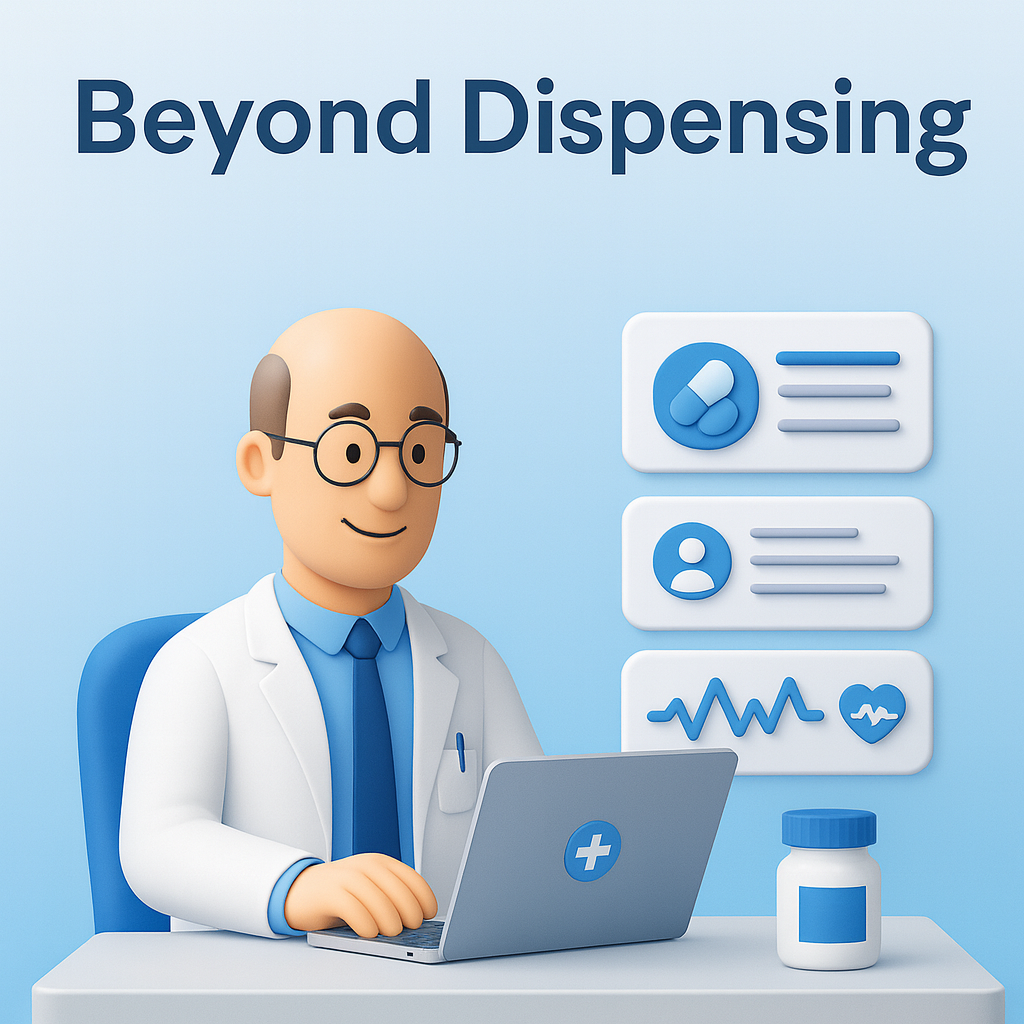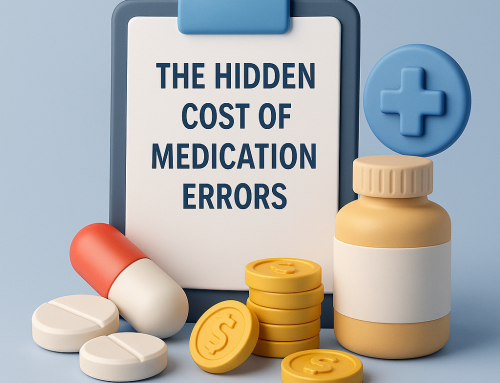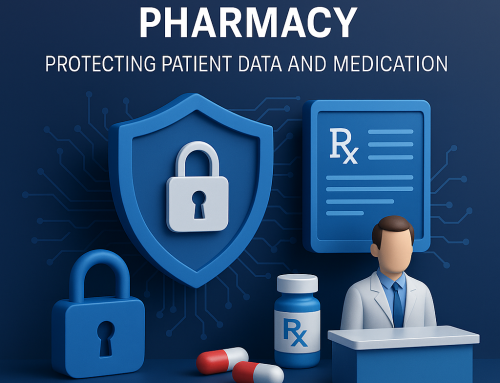Technology has fundamentally shifted pharmacy practices. Today, pharmacists are clinical consultants, patient advocates, and medication therapy experts who use advanced technology to deliver care far beyond traditional pharmacy boundaries.
While that technology offers tremendous opportunities, implementation requires an understanding of how these tools can be integrated into current workflows. Modern medication management technology expands pharmacists’ services while maintaining the human connection that remains the heart of quality healthcare.
Why Technology-Enhanced Pharmacy Practice Matters in Long-Term Care
Long-term facilities have unique challenges that make technology-enhanced pharmacy services essential. Residents often manage multiple complex medication regimens, require frequent dosing adjustments, and engage in continuous monitoring that traditional pharmacy models can’t provide.
What specific challenges do long-term care pharmacists face? The short answer is complexity at scale. Long-term care pharmacists manage medication regimens for dozens or even hundreds of residents simultaneously. Each resident has multiple chronic conditions requiring different medications, varying administration schedules, and frequent adjustments based on challenging health status.

Technology addresses some of these challenges through several key capabilities:
- Medication therapy management at scale, advanced software platforms give pharmacists a comprehensive medication review of entire facilities. Support systems can analyze thousands of data points simultaneously, identifying drug interactions, therapeutic duplications, and optimization opportunities that would be extremely difficult to handle manually.
- Real time clinical decision support modern systems give instant alerts about potential medication issues. Many of these systems integrate directly with electronic health records, making it easier for pharmacists to have complete patient information when making clinical recommendations.
Extending Pharmacy Oversight Beyond Traditional Boundaries
Remote monitoring has revolutionized how pharmacists oversee medication therapy effectiveness and safety. The results are continuous data streams about medication adherence, therapeutic outcomes, and potential adverse events.
How effective is remote monitoring compared to traditional in-person assessments? The reach search shows that continuous remote monitoring provides more comprehensive data than periodic in-person evaluations. Remote systems can consistently capture medication adherence, vital sign trends, and system changes between traditional pharmacy visits.
Through remote monitoring, pharmacists can expand their oversight through:
- Automated adherence tracking smart dispensing systems equipped with sensors to track exactly when medications are accessed, how long storage compartments remain open, and whether prescribed regimens are being followed. Combining this data with targeted interventions can help residents maintain complex medication schedules.
- Continuous health parameter monitoring integration with wearable devices and automated monitoring equipment gives pharmacists real-time data about blood pressure, glucose levels, heart rate, and other vitals. When values fall outside acceptable ranges, pharmacists can immediately take action.
Personalizing Health Through Virtual Interactions
Telehealth platforms have opened up new possibilities for pharmacist-patient interactions and long-term care. Video consultations can provide face-to-face medication counseling regardless of a patient’s mobility.
What advantages do virtual pharmacy consultants offer over traditional methods? Virtual consultants can increase schedule flexibility, reduce infection exposure risks, and include family members in medical decisions, regardless of location. Pharmacy consultants can also offer educational opportunities through screen-sharing capabilities.
These platforms transform patient interactions, giving patients
- Enhanced medication education telehealth platforms, which allow pharmacists to share educational materials visually, review medication schedules in real time, and provide personalized counseling that can address concerns and questions.
- Family integration and care coordination virtual consultations that can easily include family members and caregivers, giving patients a greater chance for success beyond the facility. Integrations like these improve adherence and provide additional safety monitoring when residents spend time outside the facility.
Advanced Medication Management Systems
Automated medication management systems give the technical foundation that can expand pharmacist roles. These platforms integrate inventory management, dispensing automation, and clinical decision support into comprehensive solutions.
What features make automated systems particularly valuable for pharmacist practice expansion? Advanced systems combine secure inventory control with biometric authentication, comprehensive audit trails, and intelligence alerts. That way, pharmacists can maintain routine tasks while providing data for clinical decision making.
The systems that most often expand roles do so by:
- Biometric security and access control advanced authentication systems that ensure only authorized personnel can access medications while creating audit trails for every transaction. The results enable pharmacists to focus on clinical activities rather than inventory management concerns.
- Integrated clinical decision support monitoring dispensing systems incorporate clinical algorithms that flag potential medication issues. These alerts give pharmacists an immediate opportunity for clinical interventions before medications reach residents.
Transforming Information into Clinical Insights Through Data Analytics
Modern pharmacy practices rely heavily on data analytics for optimization and improving patient outcomes. Advanced reporting systems analyze medication utilization patterns, identify cost-saving opportunities, and track clinical outcomes.
How can data analytics improve medication management in long-term care? Analytics platforms can identify residents at high risk for adverse effects, recognize patterns in medication therapy, detect early signs of therapeutic failure, and optimize medication regimens based on population health data.
Carefully analyzing these insights drives clinical improvements through:
- Population health analytics, comprehensive data analysis, which enables pharmacists to identify facility-wide trends for therapeutic improvements or preventative interventions. A population-level perspective helps optimize medication management.
- Predictive modeling for preventative care uses machine learning algorithms that can analyze historical data to predict which residents will most likely have medical-related problems. This enables proactive interventions that could prevent adverse events and improve outcomes.
Implementation Strategies for Technology Integration
Successful implementation of technology-enabled pharmacy services requires careful planning, comprehensive training, and ongoing support. Investing in proper implementation leads to better outcomes and higher user satisfaction.
What are the key factors for successful pharmacy technology implementation? It all depends on comprehensive staff training, robust Technical Support, careful workflow integration, and continuous monitoring of system performance. Rushing implementation without adequate preparation results in poor adoption.
Successful implementation requires attention to these critical elements:
- Phased implementation approach, gradual system rollouts give staff the time to adapt to new technologies without overwhelming existing workflows. Start with core functionality and gradually add advanced features to ensure smooth transitions and maintain patient care quality.
- Comprehensive training programs are only as effective as their users. They should cover system operation and clinical applications that expand pharmacist roles.
The Bottom Line
Technology has fundamentally transformed pharmacists’ roles in long-term care. Medication therapy management systems, remote monitoring capabilities, and telehealth platforms now provide pharmacists with personalized, data-driven care that improves patient outcomes while reducing costs. Facilities that embrace these technologies are positioning themselves to deliver superior patient care and operational efficiency.
The pharmacists and healthcare administrators who invest in advanced medication management technology are defining the future of long-term care pharmacy practices. The continued evolution of these technologies will show a gap between early adopters and traditional practices. The time to embrace technological transformation is now.
Phoenix LTC’s innovative medication management solutions and state-of-the-art software platforms provide the technological foundation that enables pharmacists to expand their roles and deliver exceptional patient care. Our comprehensive systems support everything from secure inventory control to remote monitoring capabilities, empowering pharmacy professionals to make their greatest impact on patient outcomes.







